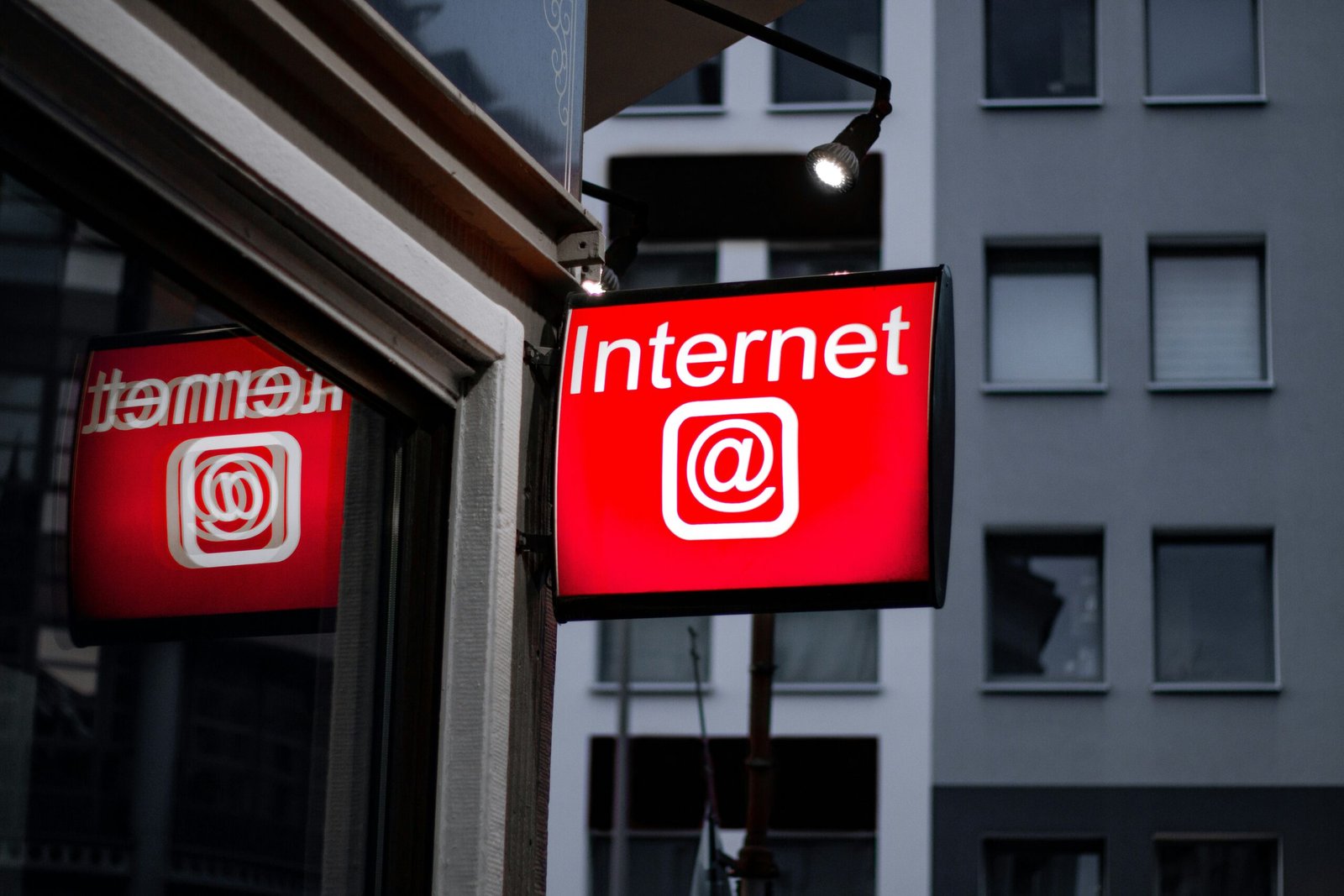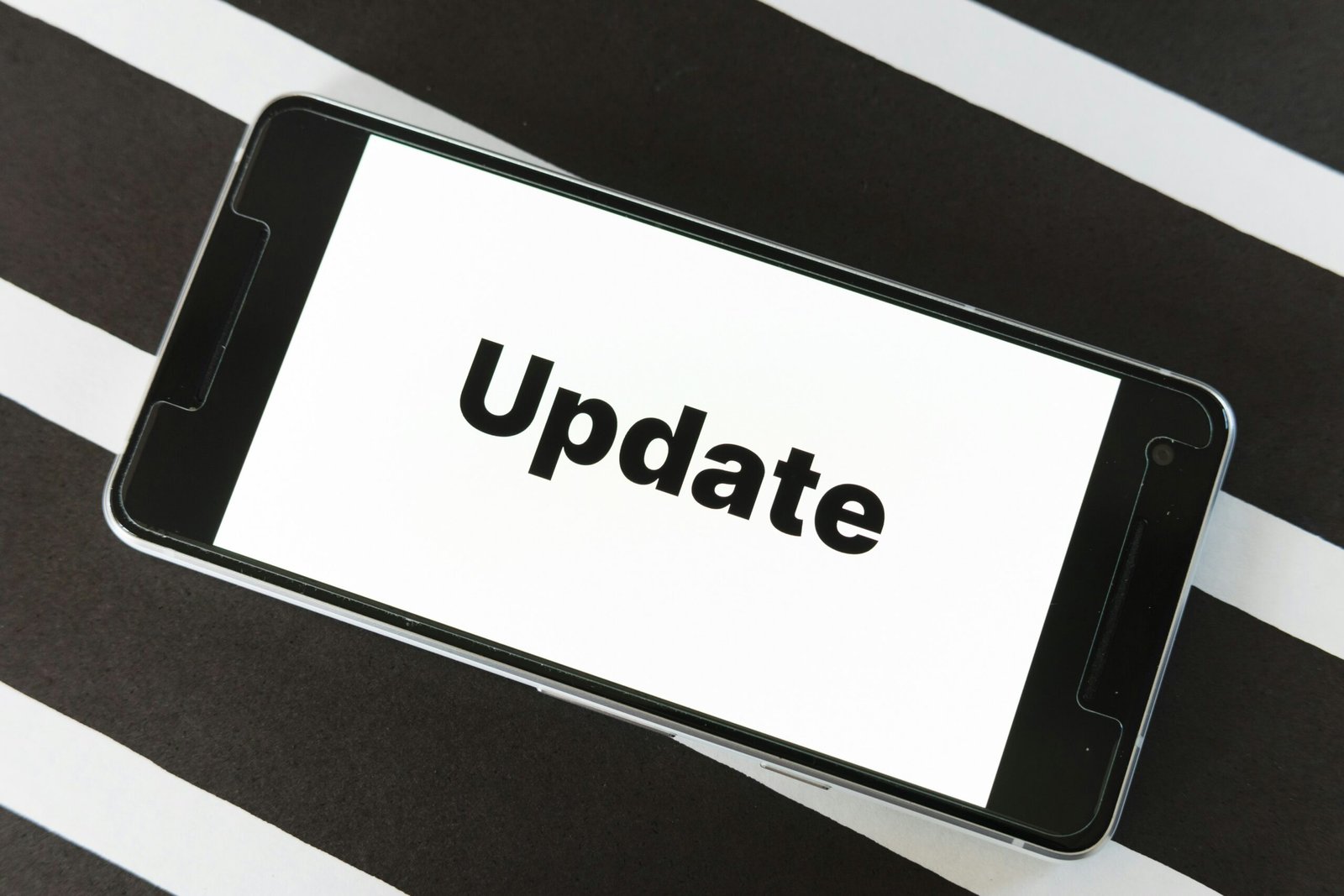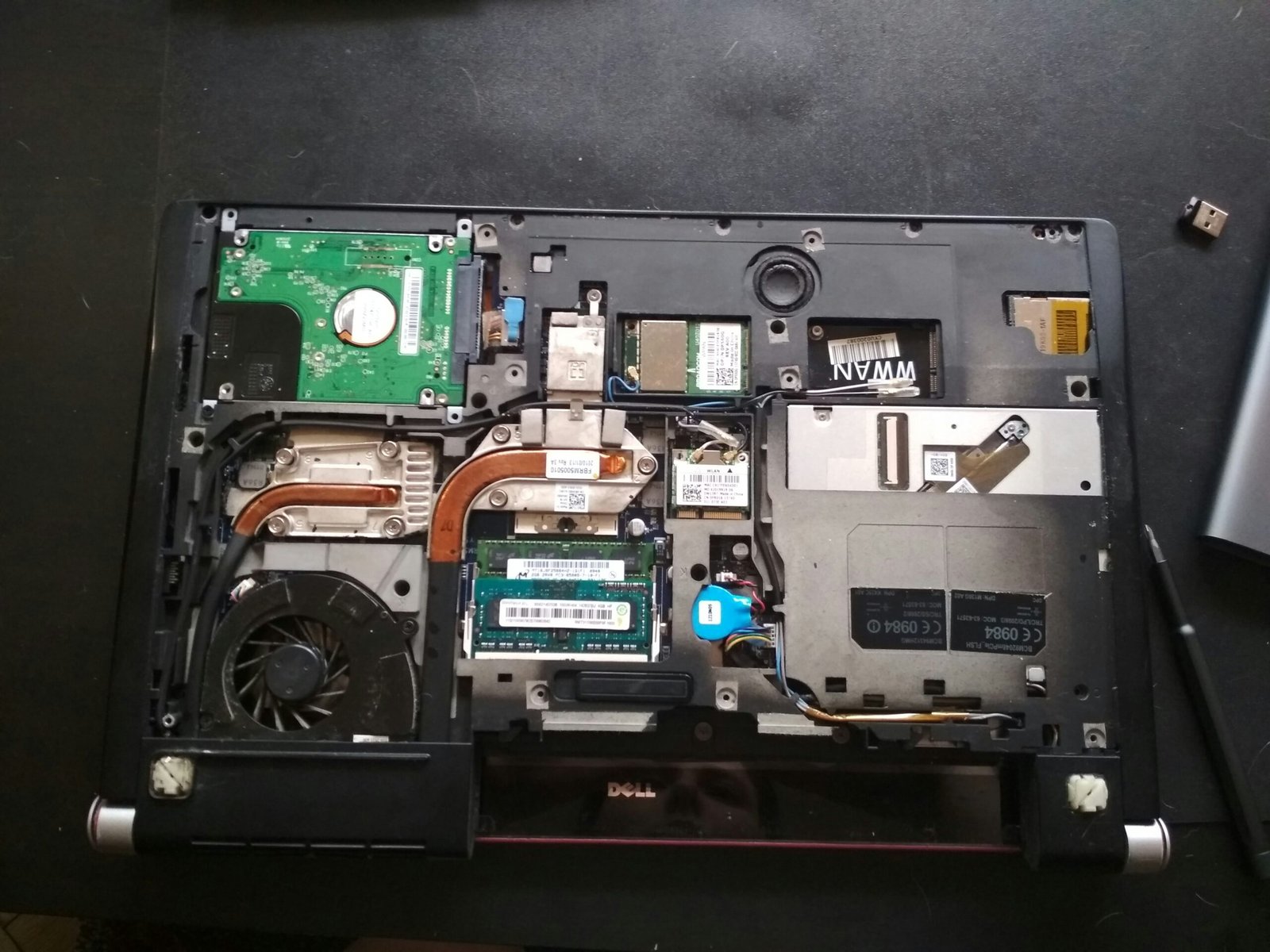
Introduction to Verizon Outages
Verizon outages refer to interruptions in the availability of services offered by Verizon Communications, including internet, phone, and television services. These outages can arise from various factors such as natural disasters, network congestion, hardware failures, or maintenance activities. Understanding the nature of these outages is crucial, as their occurrence can significantly impact users who rely on consistent connectivity for both personal and professional purposes.
The implications of Verizon outages are far-reaching. For individual consumers, a service disruption may hinder communication, access to information, and entertainment services, leading to frustrations and inconveniences. For businesses, the stakes are even higher. Frequent or prolonged service interruptions can affect productivity, customer service, and ultimately, the bottom line. In today’s digital age, where many facets of professional and daily life depend on reliable internet connectivity and telecommunications, being well-informed about these outages becomes paramount.
The causes behind Verizon outages can be varied. Severe weather conditions such as hurricanes or snowstorms may damage physical infrastructure, while sudden spikes in usage during peak times can result in network slowdowns. Additionally, planned maintenance is a routine part of network management that can lead to temporary service disruptions. Most importantly, understanding the nature of these outages helps consumers and businesses grasp the necessary steps to mitigate their impact and stay connected.
As we delve deeper into the topic of Verizon outages in this blog post, we will explore how to effectively stay informed during these occurrences, empowering users to navigate disruptions with confidence and awareness. By being proactive and informed, individuals can better manage the implications that arise from such service interruptions.
How to Check if Verizon is Down in Your Area
Determining whether Verizon services are experiencing an outage in your area can be crucial for maintaining communication, especially during emergencies. Fortunately, several methods are available to assist you in checking Verizon’s service status. One of the most effective tools is the Verizon outage map, which provides real-time updates on service availability across various regions.
To access the Verizon outage map, start by visiting the official Verizon website. Once on the homepage, navigate to the support section, where you can find resources related to outages and service availability. There, you’ll see a link or button directing you to the outage map. This interactive tool allows you to zoom in on your specific area, providing detailed information about current outages, as well as estimated times for service restoration.
In addition to the outage map, another useful method is to check social media platforms and community forums. Many users post about service disruptions, making it a valuable resource for real-time updates. Websites like Downdetector also aggregate user-reported issues and can indicate whether Verizon is experiencing widespread problems or if the issue is localized.
Furthermore, consider the impact of your geographic location on service availability. Areas prone to severe weather events may experience increased disruption during storms, leading to temporary outages. If you suspect a localized issue, reaching out to your neighbors or local business can provide additional insight into whether Verizon is indeed down in your vicinity.
By utilizing these methods, you can stay informed about Verizon outages affecting your area and make informed decisions about your communication needs.
The Role of Social Media in Identifying Verizon Outages
In the digital age, social media platforms such as Twitter have emerged as vital tools for real-time information sharing, particularly regarding service disruptions like Verizon outages. By leveraging these platforms, users can not only stay informed but also engage with others facing similar challenges. Twitter, in particular, is known for its immediacy, making it an optimal channel for monitoring live updates on service status.
One effective method for staying updated on Verizon outages is through the use of relevant hashtags. Users can search for and follow hashtags such as #VerizonOutage or #VerizonDown, which often trend during significant service interruptions. These hashtags provide a centralized location for users to find posts from other individuals experiencing similar issues, making it easier to gauge the scope and impact of the outage. Moreover, utilizing these hashtags allows users to contribute their own experiences, further enriching the community discourse surrounding the outage.
In addition to hashtags, following accounts related to Verizon and telecommunications news can significantly enhance the user experience. Many customer service accounts and official company pages provide timely updates directly from the source, offering clarity amidst confusion. Users should consider turning on notifications for these accounts to receive alerts about service outages as they arise.
Another useful approach is to monitor trending topics on Twitter, as outages often become a focal point for discussion. These trends can offer insight into the extent of the issue, showing how many users are affected and helping to validate individual experiences. By observing these trends, users are better equipped to understand the situation and anticipate when services may be restored.
Overall, social media is a powerful ally for individuals seeking real-time information on Verizon outages, fostering a sense of community and collaboration in times of service disruptions.
Navigating the Verizon Fios and Internet Outages
Verizon Fios users may occasionally encounter outages that disrupt their internet connection. These interruptions can stem from a variety of sources, such as severe weather conditions, maintenance activities, network overloads, or hardware malfunctions. Understanding these common causes can help users better navigate difficulties with their Fios service and facilitate quicker resolutions.
If an outage occurs, the first step is to diagnose the issue. Users can begin by checking the status of their network connection. This can be done by inspecting the Fios router for any warning lights. A flashing red light generally indicates a problem, while a solid green light signifies that the internet is functioning correctly. Additionally, users should verify if the issue is localized by reconnecting other devices or checking with neighbors for similar connectivity problems.
In instances of suspected service outages affecting Fios, users can visit the Verizon website or utilize the My Verizon app. Both platforms generally provide real-time updates on network status, and users will often find information regarding any community outages. If an official outage is reported, users should exercise patience as Verizon works to restore services. However, if connectivity issues persist beyond the expected restoration time, it might be necessary to contact Verizon customer support.
When reaching out for assistance, it is advisable to provide as much detail as possible about the specific issues experienced. This includes any error messages, the type of device encountering problems, and steps already taken to troubleshoot the situation. Through effective communication, users can expedite the resolution process, ensuring a swift return to reliable Fios internet service. Regularly monitoring service updates and maintaining open lines of communication with customer support will empower users to stay informed and connected even in times of disruption.
User-Reported Issues: Insights from Reddit and Other Forums
Verizon outages can significantly affect user experience, resulting in frustration for many customers. One of the most useful resources for gathering insights about these outages is online forums and platforms such as Reddit. By visiting subreddits dedicated to Verizon or broader telecommunications discussions, customers can share their experiences and gain valuable insight into the scope and frequency of service disruptions.
When browsing through comments and reports on these platforms, it is essential to consider the context of the information being shared. Users often report issues in real-time, providing a snapshot of service status across different regions. Observing patterns in these reports can help individuals gauge if an outage is widespread or localized. For example, if several users from the same geographic area report problems simultaneously, it is likely indicative of a larger issue affecting that specific region. On the other hand, isolated reports may suggest individual user complications rather than a systemic outage.
Active participation in discussions can further enhance understanding. Members often share troubleshooting tips or updates on when services may be restored, offering a more comprehensive view of the situation. Additionally, many users tend to provide updates if their issue resolves, which allows others to track progress effectively. Interpreting sentiments and feedback from these user reports can also highlight the overall temperature regarding Verizon’s service reliability, shedding light on how frequently customers encounter outages.
Utilizing these online resources not only keeps users informed about current service issues but also fosters a sense of community among Verizon customers. This enables individuals to stay connected, offering mutual support and information that help navigate any outage effectively.
Leveraging Downdetector for Real-Time Updates
In today’s digital age, staying connected is crucial, and the reliability of your service provider can significantly impact your day-to-day activities. One invaluable tool for monitoring real-time outages is Downdetector. This platform provides users with insights into service interruptions across various providers, including Verizon. Utilizing Downdetector can help you quickly assess the situation and understand if the disruptions you are experiencing are part of a larger issue.
To utilize Downdetector effectively, start by navigating to their website or downloading their mobile application. Upon arrival, you will notice a search bar where you can enter “Verizon” to check for recent outage reports. The homepage also displays a real-time outage map, which visually represents areas experiencing issues. This feature allows you to gauge whether the problem is localized or widespread, informing your decision on whether to initiate troubleshooting steps.
Once you’ve examined the map, you can delve deeper into the data. Downdetector compiles outage reports from various users, providing a graphical representation of incidents over time. This can assist you in determining whether the disruption is a temporary glitch or a more extended outage. The platform also allows users to submit their own incident reports, contributing to the comprehensive understanding of the situation. By comparing the user-generated reports with the real-time map and other credible sources, you can form a clearer picture of Verizon’s service reliability during outages.
Additionally, consider checking social media platforms or forums for discussions concerning Verizon service. Users often share their experiences in real-time, allowing you to corroborate information obtained from Downdetector. By leveraging this combination of tools, you can stay informed about outages and better manage your service expectations.
What to Do During a Verizon Outage
Experiencing a Verizon outage can be frustrating, especially when we rely heavily on mobile and internet services for both personal and professional tasks. However, there are several strategies to enhance your connectivity experience and mitigate disruptions. First and foremost, it is advisable to check the status of the outage. You can do this by visiting Verizon’s official outage map online or utilizing the My Verizon mobile app, which typically offers real-time updates and alerts. This information can guide your next steps based on the extent and estimated duration of the service interruption.
If you find yourself without connectivity, consider alternative options to stay connected. Public Wi-Fi networks, available in coffee shops, libraries, or community centers, can provide temporary access to the internet. Bear in mind, however, that public networks come with security risks, so it’s crucial to use a virtual private network (VPN) to protect your data during these connections.
Another effective remedy is to troubleshoot your devices. Start by restarting your modem and router, which can often resolve minor connectivity issues. Additionally, ensure that your device’s software is up to date, as outdated firmware can sometimes lead to connectivity problems. If you are using Wi-Fi, try switching to a wired connection if possible, as this may offer more stability during an outage.
In situations where you cannot connect to the internet, prioritize productivity through offline activities. Utilize this time for tasks such as organizing files, drafting documents in offline applications, or even taking the opportunity to catch up on reading. Maintaining a digital calendar or utilizing productivity tools offline can also aid in planning tasks to tackle when service is restored.
By being proactive and exploring these alternative methods, users can remain productive during a Verizon outage, ensuring minimal disruption to their daily activities.
Preventive Measures to Minimize the Impact of Future Outages
As technology continues to evolve, outages can be an inconvenient and sometimes disruptive reality for internet users. However, there are several preventive strategies that individuals and businesses can adopt to minimize the impact of these disruptions. One essential step is to consider alternative backup internet options. By investing in a secondary internet connection, such as a mobile broadband plan or satellite internet, users can ensure that they remain connected even when their primary Verizon service is affected. This redundancy not only provides peace of mind but also promotes uninterrupted communication and access to important online resources.
Another critical aspect to consider is the use of reliable communication methods during an outage. While traditional methods such as landline telephones may not be affected, modern users can benefit from apps that allow for message and call functionalities via cellular data. Additionally, maintaining current contact information for essential services and resources can provide users with alternative ways to receive updates during an outage.
Regular system checks and maintenance can also play a significant role in mitigating the effects of outages. Users should routinely refresh their hardware and software setups, ensuring that all devices are updated and functioning optimally. This includes periodic inspections of routers and modems, as well as running diagnostics on the network. By addressing issues proactively, users can ensure they are less susceptible to outages and are prepared to respond effectively when they do occur.
Lastly, staying informed about potential outages through local news sources or dedicated Verizon communication channels can help users anticipate disruptions and prepare accordingly. By implementing these preventive measures, individuals can enhance their resilience against unforeseen interruptions and maintain a consistent connection to the services they rely on.
Conclusion: Staying Informed and Prepared
In today’s fast-paced digital world, understanding how to stay informed during Verizon outages is crucial for maintaining connectivity and productivity. Throughout this blog post, we explored the various factors contributing to service interruptions and the proactive measures that customers can take to manage these situations effectively. Awareness of potential outages and their causes can significantly minimize frustration when disruptions occur.
One of the key takeaways is the importance of utilizing Verizon’s outage detection tools, social media updates, and customer service resources. By monitoring these channels, users can gain real-time insights into outage status and when services are expected to resume. This knowledge enables individuals and businesses alike to plan accordingly and adjust their activities to mitigate the impact of lost connectivity.
Moreover, being part of a community that shares experiences during outages can be beneficial. Engaging with others who encounter similar issues allows customers to learn from different perspectives and solutions. Sharing insights and tips not only fosters a sense of solidarity but also empowers users to navigate their challenges more effectively, especially during extended outages.
Ultimately, staying informed and being prepared are essential strategies in dealing with Verizon outages. It empowers customers with the knowledge and resources required to maintain connectivity. As we foster a culture of communication and proactive engagement, we contribute to a more resilient community that can withstand the challenges posed by unexpected service disruptions. We encourage all readers to share their experiences with Verizon outages and to continue utilizing the resources discussed in this blog to remain informed and prepared for any future disruptions.









Hi,
Kudos on your new domain brandsgrip.com! It’s a great feeling to start a new online journey.
In line with our program to assist new domain owners, I’m connecting with a useful resource for brandsgrip.com.
It’s called the Google Maps Lead Collector – a Chrome extension that allows you to discover local businesses in your area.
I’ve created a quick video that demonstrates how it works:
https://www.youtube.com/watch?time_continue=20&v=1Dd7i4vNgu0
This complimentary tool enables you to:
Quickly gather targeted business leads
Find potential clients in specific niches
Streamline your lead generation
Begin building your business immediately
You’ll get 50 leads per search with no limit on the number of searches!
Get your free copy from the video description.
https://www.youtube.com/watch?time_continue=20&v=1Dd7i4vNgu0
Rooting for your success with brandsgrip.com! Feel free to reach out with any queries.
All the best,
Micheline Spradling
Online Marketing Expert
Hi,
Just had a look at your site – it’s well-designed, but not performing well in search engines.
Would you be interested in improving your SEO and getting more traffic?
I can send over a detailed proposal with affordable packages.
Warm regards,
Nikita
Hey team brandsgrip.com,
I would like to discuss SEO!
I can help your website to get on first page of Google and increase the number of leads and sales you are getting from your website.
May I send you a quote & price list?
Bests Regards,
Ankit
Best AI SEO Company
Accounts Manager
http://www.letsgetoptimize.com
Phone No: +1 (949) 508-0277
Hello,
We have a promotional offer for your website brandsgrip.com.
If You Want FREE, Targeted Traffic
From The TOP 3 Free Traffic Sources,
Then Pay Close Attention…
See it in action: https://goldsolutions.pro/TrafficSniper
You are receiving this message because we believe our offer may be relevant to you.
If you do not wish to receive further communications from us, please click here to UNSUBSCRIBE:
https://goldsolutions.pro/unsubscribe?domain=brandsgrip.com
Address: 209 West Street Comstock Park, MI 49321
Looking out for you, Ethan Parker
Hi,
Just had a look at your site – it’s well-designed, but not performing well in search engines.
Would you be interested in improving your SEO and getting more traffic?
I can send over a detailed proposal with affordable packages.
Warm regards,
Niketa
Hey team brandsgrip.com,
I would like to discuss SEO!
I can help your website to get on first page of Google and increase the number of leads and sales you are getting from your website.
May I send you a quote & price list?
Bests Regards,
Ankit
Best AI SEO Company
Accounts Manager
http://www.letsgetoptimize.com
Phone No: +1 (949) 508-0277
Hi,
I am a digital marketing provider.
I saw your present website & I can help you to improve your website on the top in GOOGLE Search.
Our main focus will be to help generate more sales & online traffic.
Let me know if you are interested, we will send you further details.
Thank You,
Sachin
Hello,
We have a promotional offer for your website brandsgrip.com.
If You Want FREE, Targeted Traffic
From The TOP 3 Free Traffic Sources,
Then Pay Close Attention…
See it in action: https://goldsolutions.pro/TrafficSniper
You are receiving this message because we believe our offer may be relevant to you.
If you do not wish to receive further communications from us, please click here to UNSUBSCRIBE:
https://goldsolutions.pro/unsubscribe?domain=brandsgrip.com
Address: 209 West Street Comstock Park, MI 49321
Looking out for you, Ethan Parker
Hello,
We have a promotional offer for your website brandsgrip.com.
Here’s the Breakthrough Changing How Affiliates Make Money!
The Revolutionary AI Tool & Complete Business System That Builds, Writes & Ranks Websites…
YES – Writes the Content For You
YES – Structures it for SEO rankings
YES – Publishes it directly to your site
YES – Brings in organic traffic on autopilot
YES – Helps generate commissions
See it in action: https://www.novaai.expert/AIContentSniper
You are receiving this message because we believe our offer may be relevant to you.
If you do not wish to receive further communications from us, please click here to UNSUBSCRIBE:
https://www.novaai.expert/unsubscribe?domain=brandsgrip.com
Address: 209 West Street Comstock Park, MI 49321
Looking out for you, Ethan Parker
Hello,
We have a promotional offer for your website brandsgrip.com.
“The Underground Method That Creates Invisible Pages Google Can’t Resist… And Sends You Free Traffic on Demand”
Brand New & Never Seen Before – Turn secret Ghost Pages into traffic‑pumping machines without anyone knowing what you’re doing.
No Website Needed – Ghost Pages become your site… instantly.
Zero Tech Skills Required – If you can click a mouse, you can do this.
Works Anywhere – Run this from anywhere in the world.
Perfect for Beginners & Pros – Affiliate marketers, small biz owners, coaches… anyone who wants free buyer traffic fast.
Stay Totally Anonymous – Competitors can’t figure out your source, but they’ll see you everywhere.
Fast Setup – Be live and ready in under 30 minutes
See it in action: https://goldsolutions.pro/GhostPages
You are receiving this message because we believe our offer may be relevant to you.
If you do not wish to receive further communications from us, please click here to UNSUBSCRIBE:
https://goldsolutions.pro/unsubscribe?domain=brandsgrip.com
Address: 209 West Street Comstock Park, MI 49321
Looking out for you, Ethan Parker
Hello,
We have a promotional offer for your website brandsgrip.com.
If You Want FREE, Targeted Traffic
From The TOP 3 Free Traffic Sources,
Then Pay Close Attention…
See it in action: https://goldsolutions.pro/TrafficSniper
You are receiving this message because we believe our offer may be relevant to you.
If you do not wish to receive further communications from us, please click here to UNSUBSCRIBE:
https://goldsolutions.pro/unsubscribe?domain=brandsgrip.com
Address: 209 West Street Comstock Park, MI 49321
Looking out for you, Ethan Parker
Hello,
We have a promotional offer for your website brandsgrip.com.
“30-Second Trick Turns My Phone Into
a $1,000/Day WiFI CASH BOT”
Just Tap The “Secret Button” To Cash In From This $385 Billion A.I WiFi Cash Loophole!
See it in action: https://goldsolutions.pro/WiFiCashBot
You are receiving this message because we believe our offer may be relevant to you.
If you do not wish to receive further communications from us, please click here to UNSUBSCRIBE:
https://goldsolutions.pro/unsubscribe?domain=brandsgrip.com
Address: 209 West Street Comstock Park, MI 49321
Looking out for you, Ethan Parker
Hello,
We have a promotional offer for your website brandsgrip.com.
Create with Purpose
Feeling stuck, overwhelmed, or unsure where to start?
This video breaks it all down. Step-by-step. No fluff. No hype. Watch it now. It might just be the turning point you’ve been waiting for. Watch now before it’s too late.
Watch this video before it’s gone.
See it in action: https://goldsolutions.pro/MonetizeYourFuture
You are receiving this message because we believe our offer may be relevant to you.
If you do not wish to receive further communications from us, please click here to UNSUBSCRIBE:
https://goldsolutions.pro/unsubscribe?domain=brandsgrip.com
Address: 209 West Street Comstock Park, MI 49321
Looking out for you, Ethan Parker
Hello,
We have a promotional offer for your website brandsgrip.com.
Stop giving away boring PDFs!
Turn any coloring page into an interactive lead magnet your audience will actually love.
See it in action: https://goldsolutions.pro/ColorMyLeads
You are receiving this message because we believe our offer may be relevant to you.
If you do not wish to receive further communications from us, please click here to UNSUBSCRIBE:
https://goldsolutions.pro/unsubscribe?domain=brandsgrip.com
Address: 209 West Street Comstock Park, MI 49321
Looking out for you, Ethan Parker
Hello,
We have a promotional offer for your website brandsgrip.com.
No Product. No Skills. No Work. No Talking. No Selling…
World’s First AI App That Lets You Launch A Fully-Automated Freelancing Business Without Doing Any Of The Freelancing Yourself & Without Hiring Anyone
Just Pick Your Built-In AI Worker (Copywriter, Designer, Developer, Assistant, & More)…
Let Them Deliver Jobs For You… While You Sit Back & Get Paid…
No Experience – No Skills – No Upfront Cost – No Waiting – Instant Results
See it in action: https://www.novaai.expert/TaskManAI
You are receiving this message because we believe our offer may be relevant to you.
If you do not wish to receive further communications from us, please click here to UNSUBSCRIBE:
https://www.novaai.expert/unsubscribe?domain=brandsgrip.com
Address: 209 West Street Comstock Park, MI 49321
Looking out for you, Ethan Parker
Hello,
We have a promotional offer for your website brandsgrip.com.
AI has made it easier than ever to build a reliable business, powered by an email list that grows itself…and be managed in under 30 minutes per day.
This isn’t theory. It’s not hype.
It’s the exact system we used to generate $94,113 in just 11 weeks … while building it live, from scratch, in front of a small test group.
See it in action: https://www.novaai.expert/AIScaleStack
You are receiving this message because we believe our offer may be relevant to you.
If you do not wish to receive further communications from us, please click here to UNSUBSCRIBE:
https://www.novaai.expert/unsubscribe?domain=brandsgrip.com
Address: 209 West Street Comstock Park, MI 49321
Looking out for you, Ethan Parker
Hello,
We have a promotional offer for your website brandsgrip.com.
BACKLINK IGNITOR creates powerful backlinks in seconds.
No coding, no manual work – just click and rank!
More backlinks. More traffic. More sales.
All thanks to BACKLINK IGNITOR!
See it in action: https://goldsolutions.pro/BacklinkIgnitor
You are receiving this message because we believe our offer may be relevant to you.
If you do not wish to receive further communications from us, please click here to UNSUBSCRIBE:
https://goldsolutions.pro/unsubscribe?domain=brandsgrip.com
Address: 209 West Street Comstock Park, MI 49321
Looking out for you, Ethan Parker
Hello,
We have a promotional offer for your website brandsgrip.com.
Still Can’t Profit With Tech Like ChatGPT4.0 Around?
World’s First AI App That Turns Any Idea, Url, Blog, Website, Keyword, Prompt or Script Into Studio Quality Videos In 100+ Languages
In Just 60 Seconds, For A Low One Time Fee
VidNinja AI Allows Us To Generate 8,458 Free Clicks For Each Video We Create For Free…
First 99 Action Taker Get Instant Access To VidNinja AI Accelerator
VidNinja AI Eliminated The Need For Us To Create Videos Manually…
See it in action: http://novaai.expert/VidNinjaAI
You are receiving this message because we believe our offer may be relevant to you.
If you do not wish to receive further communications from us, please click here to UNSUBSCRIBE:
https://www.novaai.expert/unsubscribe?domain=brandsgrip.com
Address: 209 West Street Comstock Park, MI 49321
Looking out for you, Ethan Parker
Hello,
We have a promotional offer for your website brandsgrip.com.
World’s First AI App That Rank Any Link We Want #1 In Google For Any Keyword We Want… In 30 Seconds Or Less…
Sending Us A Surge Of 1,478 Clicks A Day 100% FREE
No Technical Skills – No Experience – No Coding – No Setup – No Waiting
Watch How We Generate 342 Clicks Per Hour In 27 Seconds Flat…
See it in action: https://goldsolutions.pro/SneakAI
You are receiving this message because we believe our offer may be relevant to you.
If you do not wish to receive further communications from us, please click here to UNSUBSCRIBE:
https://goldsolutions.pro/unsubscribe?domain=brandsgrip.com
Address: 209 West Street Comstock Park, MI 49321
Looking out for you, Ethan Parker
Hello,
We have a promotional offer for your website brandsgrip.com.
Why Pay Hundreds Of Dollars For Multiple AI Subscriptions When AI ModelSuite Gives You Everything In One Powerful Package?
AI ModelSuite is an all-in-one AI powerhouse that replaces chatbots, image generators, content creations, video generators, and more – all for a one-time payment of just $17!
Total Cost Without AI ModelSuite? $2500+ per Year!
Why spend $200+ per month when you can get it all for just $17 One Time?
Stop Overpaying – Get AI ModelSuite for Just $17 (One-Time!)
No Monthly Fees | Unlimited AI Power | One Toolkit for Everything
See it in action: https://goldsolutions.pro/AIModelSuite
You are receiving this message because we believe our offer may be relevant to you.
If you do not wish to receive further communications from us, please click here to UNSUBSCRIBE:
https://goldsolutions.pro/unsubscribe?domain=brandsgrip.com
Address: 209 West Street Comstock Park, MI 49321
Looking out for you, Ethan Parker
Hello,
We have a promotional offer for your website brandsgrip.com.
Do you want to build a profitable online business without spending countless hours and thousands of dollars creating content from scratch?
Are you looking for a done-for-you product that you can sell as your own and keep ALL of the profits for yourself?
Are you looking for high-quality content that you can take and turn into anything you want? A lead magnet, articles for your blog, social media content, etc?
Or even sell private label rights to the entire thing as if you’d created it yourself?
If you answered “YES!” to any of these questions, the Essential Copywriting Toolkit PLR Package is the shortcut you’ve been looking for!
See it in action: https://goldsolutions.pro/EssentialCopywritingToolkit
You are receiving this message because we believe our offer may be relevant to you.
If you do not wish to receive further communications from us, please click here to UNSUBSCRIBE:
https://goldsolutions.pro/unsubscribe?domain=brandsgrip.com
Address: 209 West Street Comstock Park, MI 49321
Looking out for you, Ethan Parker
Hey team brandsgrip.com,
I would like to discuss SEO!
I can help your website to get on first page of Google and increase the number of leads and sales you are getting from your website.
May I send you a quote & price list?
Bests Regards,
Ankit
Best AI SEO Company
Accounts Manager
http://www.letsgetoptimize.com
Phone No: +1 (949) 508-0277
Hello,
We have a promotional offer for your website brandsgrip.com.
AI Search Ranker is the only custom software that can rank any webpage at the top of Google AI Mode.
In just one click, this software leapfrogs any website, landing page, blog, or business to the top of AI Mode results all with:
NO coding…
NO content changes…
NO backlinks…
See it in action: https://goldsolutions.pro/AISearchRanker
You are receiving this message because we believe our offer may be relevant to you.
If you do not wish to receive further communications from us, please click here to UNSUBSCRIBE:
https://goldsolutions.pro/unsubscribe?domain=brandsgrip.com
Address: 209 West Street Comstock Park, MI 49321
Looking out for you, Ethan Parker
Hello,
We have a promotional offer for your website brandsgrip.com.
World’s First AI Agent Powered By ChatGPT-5…
That Writes And Ranks Anything We Want… On The First Page Of Google… With ZERO SEO. And Zero Ads…
See it in action: https://goldsolutions.pro/ApexAI
You are receiving this message because we believe our offer may be relevant to you.
If you do not wish to receive further communications from us, please click here to UNSUBSCRIBE:
https://goldsolutions.pro/unsubscribe?domain=brandsgrip.com
Address: 209 West Street Comstock Park, MI 49321
Looking out for you, Ethan Parker
We have a promotional offer for your website brandsgrip.com.
A 100% Done-For-You Faceless YouTube Channel Build
The goal is to reach 100,000 subscribers and achieve a fully monetized channel that generates monthly income, paid by Google on the 21st.
Over a 12-month period, 3 videos per week are created and uploaded with professional voiceovers and permission-based footage.
No camera or editing is required — every step is handled completely from start to finish.
See it in action: https://goldsolutions.pro/100KSubsYouTube
You are receiving this message because we believe our offer may be relevant to you.
If you do not wish to receive further communications from us, please click here to UNSUBSCRIBE:
https://goldsolutions.pro/unsubscribe?domain=brandsgrip.com
Address: 209 West Street Comstock Park, MI 49321
Looking out for you, Ethan Parker
Hey team brandsgrip.com,
I would like to discuss SEO!
I can help your website to get on first page of Google and increase the number of leads and sales you are getting from your website.
May I send you a quote & price list?
Bests Regards,
Ankit
Best AI SEO Company
Accounts Manager
http://www.bestaiseocompany.com
Phone No: +1 (949) 508-0277
Hello,
We have a promotional offer for your website brandsgrip.com.
Forget spending weeks writing — Ebook Writer AI lets you create a polished eBook in just 10–15 minutes. Simply enter your topic, and the tool will generate chapters, format the text, add images, and even include affiliate links.
Why choose Ebook Writer AI?
Fast: a complete eBook in minutes.
Professional design, no skills required.
Built-in monetization.
Perfect for bloggers, coaches, marketers, and anyone who wants to sell knowledge through eBooks.
Try it today > https://www.novaai.expert/eBookWriterAI
You are receiving this message because we believe our offer may be relevant to you.
If you do not wish to receive further communications from us, please click here to UNSUBSCRIBE:
https://www.novaai.expert/unsubscribe?domain=brandsgrip.com
Address: 209 West Street Comstock Park, MI 49321
Looking out for you, Ethan Parker
Hello,
We have a promotional offer for your website brandsgrip.com.
What if you could use the best AI models in the world without limits or extra costs?
Now you can. With our brand-new AI-powered app, you’ll have ChatGPT, Gemini Pro, Stable Diffusion, Cohere AI, Leonardo AI Pro, and more — all under one roof.
No monthly subscriptions
No API key expenses
No experience required
Just one dashboard, one payment, and endless possibilities.
See it in action: https://www.novaai.expert/AIModelSuite
You are receiving this message because we believe our offer may be relevant to you.
If you do not wish to receive further communications from us, please click here to UNSUBSCRIBE:
https://www.novaai.expert/unsubscribe?domain=brandsgrip.com
Address: 209 West Street Comstock Park, MI 49321
Looking out for you, Ethan Parker
Hello,
We have a promotional offer for your website brandsgrip.com.
hese Ready-to-Use Prompts Turn Free AI Tools Like ChatGPT into a Personal Deal Hunter That Finds You Cheaper Alternatives, Travel Hacks, Cashback Opportunities, and Budget Wins in Seconds –
All Without Changing a Thing About Your Routine
No Coupons | No Extensions | No Guesswork | 100% Real Savings | 100% Resell Rights
See it in action: https://goldsolutions.pro/money-saving-prompts
You are receiving this message because we believe our offer may be relevant to you.
If you do not wish to receive further communications from us, please click here to UNSUBSCRIBE:
https://goldsolutions.pro/unsubscribe?domain=brandsgrip.com
Address: 209 West Street Comstock Park, MI 49321
Looking out for you, Ethan Parker
Hello,
We have a promotional offer for your website brandsgrip.com.
Sell Without Limits. Rebrand Like a Pro. Cash In on Every Sale!
Launch Your Own Training Video Empire
The Ultimate Learning Library with Unrestricted PLR
Over 1,600 premium training videos
in red-hot niches ready for instant monetization!
See it in action: https://goldsolutions.pro/TheUltimateLearningLibrary
You are receiving this message because we believe our offer may be relevant to you.
If you do not wish to receive further communications from us, please click here to UNSUBSCRIBE:
https://goldsolutions.pro/unsubscribe?domain=brandsgrip.com
Address: 209 West Street Comstock Park, MI 49321
Looking out for you, Ethan Parker
Hello,
We have a promotional offer for your website brandsgrip.com.
Imagine having an assistant who works around the clock, handling all the routine tasks, attracting clients, and generating profit even while you sleep. Grab AI SuperBot isn’t just another tool — it’s a complete solution that helps you work faster, smarter, and earn more without extra effort.
Why does this matter to you? Because time is your most valuable resource. With this bot, you’ll free up hours usually wasted on repetitive tasks and invest them into growing your business or personal projects. It’s your chance to reach a new level of efficiency and income.
See it in action: https://www.novaai.expert/AISuperBOT
You are receiving this message because we believe our offer may be relevant to you.
If you do not wish to receive further communications from us, please click here to UNSUBSCRIBE:
https://www.novaai.expert/unsubscribe?domain=brandsgrip.com
Address: 209 West Street Comstock Park, MI 49321
Looking out for you, Ethan Parker
Hello,
We have a promotional offer for your website brandsgrip.com.
World’s First AI App That Instantly Builds Your Own “Udemy-Like” eLearning Platform – Preloaded With 100+ Ready-To-Sell, Red-Hot Online Courses
In One Single Dashboard, For A Low One-Time Fee!
Only 3 EASY Clicks – Create & Sell Stunning Online Courses on Your Own Udemy™-Style Platform to Hungry Buyers for Top Dollar.
No Reserach | No Course Creation | No Tech Skills | No Monthly Fees Required
See it in action: https://www.novaai.expert/CourseBeastAI
You are receiving this message because we believe our offer may be relevant to you.
If you do not wish to receive further communications from us, please click here to UNSUBSCRIBE:
https://www.novaai.expert/unsubscribe?domain=brandsgrip.com
Address: 209 West Street Comstock Park, MI 49321
Looking out for you, Ethan Parker
Hello,
We have a promotional offer for your website brandsgrip.com.
You’ve invested in your website — now it’s time to make it work at full power. The new AI Scale Stack helps you turn visitors into paying customers: it shows where you’re losing leads and gives you the exact steps to keep their attention, boost conversions, and grow sales. Imagine your site not just as a showcase, but as a real business engine. Discover how it works — and start earning more today.
See it in action: https://www.novaai.expert/AIScaleStack
You are receiving this message because we believe our offer may be relevant to you.
If you do not wish to receive further communications from us, please click here to UNSUBSCRIBE:
https://www.novaai.expert/unsubscribe?domain=brandsgrip.com
Address: 209 West Street Comstock Park, MI 49321
Looking out for you, Ethan Parker
Hello,
We have a promotional offer for your website brandsgrip.com.
Why do you need this? Because UGC videos sell better than any banner or text ad — and brands pay $300–$500 per clip. With UGCfluencer, you can create these viral videos in just 5 seconds — no studio, no skills, no expenses. Simply type your text, and AI generates ultra-realistic influencer-style content that converts. Whether you want to monetize traffic or start a new income stream, this is your fast ticket into the UGC revolution.
See it in action: https://www.novaai.expert/UGCfluencer
You are receiving this message because we believe our offer may be relevant to you.
If you do not wish to receive further communications from us, please click here to UNSUBSCRIBE:
https://www.novaai.expert/unsubscribe?domain=brandsgrip.com
Address: 209 West Street Comstock Park, MI 49321
Looking out for you, Ethan Parker
Hello,
We have a promotional offer for your website brandsgrip.com.
Why do you need this? To access the best AI tools—text, images, voice, code, video—without juggling dozens of subscriptions or paying monthly. Multiverse AI brings everything into one cloud dashboard, giving lifetime access to all current and future AI models with zero recurring fees. You get freedom, speed, and savings—all under your control. Discover how easy it is to create and scale content—Multiverse AI makes it possible.
See it in action: https://goldsolutions.pro/MultiverseAI
You are receiving this message because we believe our offer may be relevant to you.
If you do not wish to receive further communications from us, please click here to UNSUBSCRIBE:
https://www.novaai.expert/unsubscribe?domain=brandsgrip.com
Address: 209 West Street Comstock Park, MI 49321
Looking out for you, Ethan Parker
Hi,
We have a promotional offer for your website brandsgrip.com.
Why should you care? Because Book In A Day lets you turn your ideas into a polished, professional book in just hours—not months. No writing skills, no expensive editors, no formatting headaches. Simply follow the AI-driven, step-by-step system and you’re done! Publish your book, build authority, and start earning—effortlessly, swiftly, and stress-free.
See it in action: http://smartexperts.pro/BookInADay
You are receiving this message because we believe our offer may be relevant to you.
If you do not wish to receive further communications from us, please click here to UNSUBSCRIBE:
https://smartexperts.pro/unsub?domain=brandsgrip.com
Address: Address: 1464 Lewis Street Roselle, IL 60177
Looking out for you, Michael Turner.
Hi,
We have a promotional offer for your website brandsgrip.com.
Why you need this: to have every campaign, affiliate offer, or project start delivering traffic and income today — without spending a dime on ads or tech headaches. Ghost Pages turns you into a stealth engine that Google absolutely trusts: you build invisible pages using a secret Google asset, and they quietly start delivering targeted visitors — while your competition is nowhere the wiser.
It’s easy, it’s fast, it’s genius: no domains, hosting, social media, or technical skills required — if you can click and copy, you can do this. Plus, it really works and scales: launch one Ghost Page and BAM — traffic flows wherever you want: affiliate links, e‑com, leads — you choose. Ready to start in minutes? Discover how and get results that might blow your mind.
See it in action: http://smartexperts.pro/GhostPages
You are receiving this message because we believe our offer may be relevant to you.
If you do not wish to receive further communications from us, please click here to UNSUBSCRIBE:
https://smartexperts.pro/unsub?domain=brandsgrip.com
Address: Address: 1464 Lewis Street Roselle, IL 60177
Looking out for you, Michael Turner.
Hi,
We have a promotional offer for your website brandsgrip.com.
Why do you need this? Because Passive Class from Lee Murray gives you a totally free Lead Capture Hub—a ready-to-use system to grow your own email list and start earning without losing time or reinventing the wheel.
No bland mastermind babble—just clear, actionable steps that turn curious visitors into subscribers, and subscribers into revenue. It’s friendly, it’s expert-backed, and it’s built to upgrade your status as a money-maker online. Click through and see how quickly it turns potential into profit.
See it in action: http://smartexperts.pro/PASSIVECLASS
You are receiving this message because we believe our offer may be relevant to you.
If you do not wish to receive further communications from us, please click here to UNSUBSCRIBE:
https://smartexperts.pro/unsub?domain=brandsgrip.com
Address: Address: 1464 Lewis Street Roselle, IL 60177
Looking out for you, Michael Turner.
Hi,
We have a promotional offer for your website brandsgrip.com.
Why do you need this? Picture waking up anywhere — Bali, a café in Paris, or your couch — checking your phone and seeing a steady stream of buyer-ready clicks rolling in… without ads, outreach, or a website. That’s exactly what Rapid Traffic Flow delivers: a super-simple, plug-and-play system that gets traffic and sales flowing in minutes.
With Rapid Traffic Flow, you get a clear 3-step blueprint, AI‑powered boosters to automate the process, a “Hidden Hub” you can tap at will, and a solid refund guarantee if your traffic spike doesn’t happen — all for less than the cost of your next takeout order. Ready to stop chasing traffic and start capturing it? Dive in now and dominate the affiliate game today!
See it in action: https://smartexperts.pro/RapidTrafficFlow
You are receiving this message because we believe our offer may be relevant to you.
If you do not wish to receive further communications from us, please click here to UNSUBSCRIBE:
https://smartexperts.pro/unsub?domain=brandsgrip.com
Address: Address: 1464 Lewis Street Roselle, IL 60177
Looking out for you, Michael Turner.